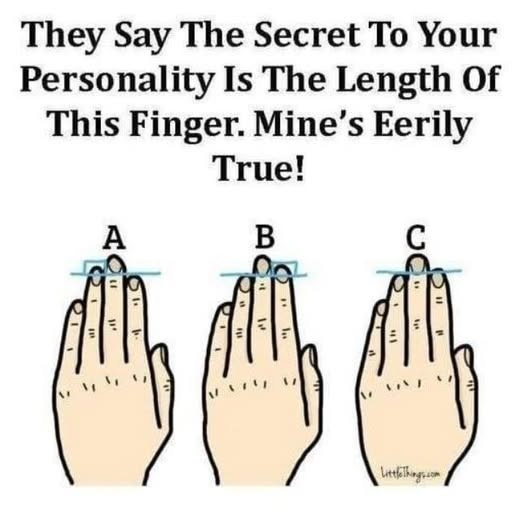Many people are fascinated by the idea that the length of our fingers can reveal insights into our personality traits. This notion often revolves around the ratio between the lengths of the index (2nd) and ring (4th) fingers, known as the 2D:4D ratio. Research suggests that this ratio could reflect levels of prenatal testosterone exposure, which may influence various facets of our personalities and behaviors.
Understanding the 2D:4D Ratio
The index finger is typically associated with traits like cooperation and social behavior, while the ring finger is linked to traits such as competitiveness and risk-taking. A shorter index finger compared to the ring finger may indicate a higher level of testosterone exposure, suggesting traits such as assertiveness and confidence. Conversely, a longer index finger can indicate higher estrogen exposure, which may correlate with analyzation and empathy.
How to Measure Your 2D:4D Ratio
To determine your 2D:4D ratio, follow these simple steps:
- Using a ruler, measure the length of your index finger from the base of the palm to the tip.
- Do the same for your ring finger.
- Divide the length of your index finger by the length of your ring finger.
Your calculated ratio can then provide a basis for introspection into your personality traits.
Applying the Insights
Understanding your 2D:4D ratio can help you leverage your strengths. For instance, if you discover that you possess a lower 2D:4D ratio, you might focus on roles that require leadership and decisiveness, such as management or entrepreneurship. If you show a higher ratio, consider careers that involve collaboration and care, such as counseling or education.
Limitations of Finger Length Analysis
While the 2D:4D ratio can offer some intriguing insights, it’s important to keep in mind that personality is complex and multi-faceted. Environmental factors, experiences, and individual choices play significant roles in shaping who we are. While this finger analysis can provide a fun perspective, it should not be taken as definitive evidence of personality.
Ultimately, whether or not you find accuracy in the traits associated with your finger lengths, exploring these patterns can be an engaging exercise in self-reflection.

